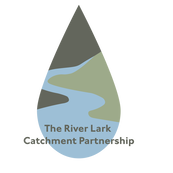APEM Lark Natural Capital Report
The River Lark catchment comprises of 12 surface water bodies under the EU Water Framework Directive (WFD). None of these water bodies achieve Good status under the current WFD classification. The River Lark Pollution Review and Action Plan identified the primary concerns within the catchment contributing to the WFD classification status: physical modification; low flow; invasive non-native species (INNS); and point-source and diffuse pollution. The aim of this project was to identify four priority water bodies to focus on for initial catchment improvements, undertake a natural capital baseline assessment and find locations for the undertaking of catchment measures.
APEM’s Optimisation Assessment Tool (OAT) identified four water bodies that should be prioritised: Lark (Abbey Gardens to Mildenhall); Tuddenham Stream; Cavenham Steam; and Lark (Hawstead to Abbey Gardens). A natural capital baseline assessment was carried out for the four water bodies. It found that a total of £21,717,943 of benefit was provided by the four water bodies in total. Highest areas of natural capital density largely surrounded wooded areas as well as recreational sites, whereas areas of low natural capital density were within urbanised centres.
Catchment measures were then determined within the four chosen water bodies – these included land use change, channel modification, and riparian improvement measures. Forty four georeferenced locations were identified for 15 catchment measures. Recommended next steps include completing walkover surveys at specified locations to determine their suitability measure deployment, working with landowners to expand dense natural capital out to areas where it may be lacking, and then re-running a natural capital assessment once catchment restoration has been completed.
The River Lark catchment comprises of 12 surface water bodies under the EU Water Framework Directive (WFD). None of these water bodies achieve Good status under the current WFD classification. The River Lark Pollution Review and Action Plan identified the primary concerns within the catchment contributing to the WFD classification status: physical modification; low flow; invasive non-native species (INNS); and point-source and diffuse pollution. The aim of this project was to identify four priority water bodies to focus on for initial catchment improvements, undertake a natural capital baseline assessment and find locations for the undertaking of catchment measures.
APEM’s Optimisation Assessment Tool (OAT) identified four water bodies that should be prioritised: Lark (Abbey Gardens to Mildenhall); Tuddenham Stream; Cavenham Steam; and Lark (Hawstead to Abbey Gardens). A natural capital baseline assessment was carried out for the four water bodies. It found that a total of £21,717,943 of benefit was provided by the four water bodies in total. Highest areas of natural capital density largely surrounded wooded areas as well as recreational sites, whereas areas of low natural capital density were within urbanised centres.
Catchment measures were then determined within the four chosen water bodies – these included land use change, channel modification, and riparian improvement measures. Forty four georeferenced locations were identified for 15 catchment measures. Recommended next steps include completing walkover surveys at specified locations to determine their suitability measure deployment, working with landowners to expand dense natural capital out to areas where it may be lacking, and then re-running a natural capital assessment once catchment restoration has been completed.
| 2022_-_07_p7991_r_lark_catchment_optimisation_final__3_.pdf |

